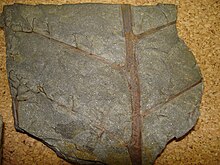Rhacophytales
- View a machine-translated version of the German article.
- Machine translation, like DeepL or Google Translate, is a useful starting point for translations, but translators must revise errors as necessary and confirm that the translation is accurate, rather than simply copy-pasting machine-translated text into the English Wikipedia.
- Consider adding a topic to this template: there are already 9,155 articles in the main category, and specifying
|topic=will aid in categorization. - Do not translate text that appears unreliable or low-quality. If possible, verify the text with references provided in the foreign-language article.
- You must provide copyright attribution in the edit summary accompanying your translation by providing an interlanguage link to the source of your translation. A model attribution edit summary is
Content in this edit is translated from the existing German Wikipedia article at [[:de:Rhacophytales]]; see its history for attribution. - You may also add the template
{{Translated|de|Rhacophytales}}to the talk page. - For more guidance, see Wikipedia:Translation.
| Rhacophytales Temporal range: Middle Devonian–Upper Devonian PreꞒ Ꞓ O S D C P T J K Pg N | |
|---|---|
 | |
| Rhacophyton sp. | |
| Scientific classification | |
| Kingdom: | Plantae |
| Division: | Pteridophyta |
| Order: | †Rhacophytales |
| Genera | |
| †Chlidanophyton | |
Rhacophytales are an extinct group of plants from the Devonian period.
The representatives are characterized by a unique branching system in which bi- and quadriseriate units occur which are located in the axils of special structures, the aphlebiae. These are abnormal leaflets on the rhachis of ferns. The appendages of the last branching stage can be dichotomously branched, in some forms they stand in one plane. The vascular system consists of a clepsydroid primary xylem with a cross section and a secondary xylem. The sporangia are in groups and have no annulus. All representatives must have been homosporous.
The exact taxonomic position of Rhacophytales is still unclear. Rhacophyton was considered to be part of Aneurophytales (a progymnosperm order) in the past, when it was regarded as a precursor of seed ferns and true ferns. It was considered to be in Protopteridales, Zygopteridales, or the basal group in Coenopteridales, an polyphyletic group containing also Stauropteridales and Zygopteridales.
The representatives of the order share characteristics with some representatives of Iridopteridales and the progymnosperms. Some authors put them as a family in Zygopteridales, a fossil fern group. With them, they share glass-shaped xylem and quadriseriate branching. With the progymnosperms they share secondary xylem.
Taylor, Taylor and Krings (2009) see them as more evolved than Trimerophyta from which they originated, but they lack the organ differentiation found in the somewhat younger fern-like plants.
References
Thomas N. Taylor, Edith L. Taylor, Michael Krings: Paleobotany. The Biology and Evolution of Fossil Plants . Second Edition, Academic Press 2009, ISBN 978-0-12-373972-8, p. 401-405.
- v
- t
- e













